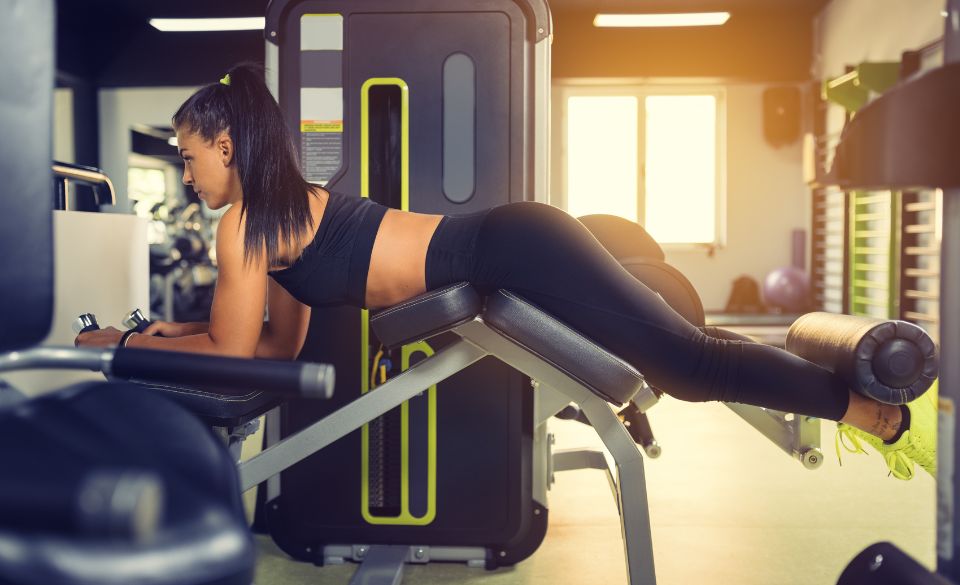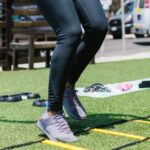
A Runner’s Guide to Effective Leg Workouts
Page Contents
As a runner, you know that strong legs are the foundation of your performance. Whether you’re aiming for a new personal best in a marathon or simply looking to improve your overall running experience, incorporating effective leg workouts into your training routine is essential. In this comprehensive guide, we’ll explore the science behind leg training for runners and provide you with a range of exercises and tips to boost your leg strength and endurance.
The Science of Leg Training for Runners
Why Strong Legs Matter
Before we dive into specific exercises, let’s understand why leg strength is critical for runners. Your legs are the primary drivers of forward motion, and a well-balanced leg strength program can provide numerous benefits:
Improved Running Economy: Strong leg muscles can help you use oxygen more efficiently, reducing the energy expenditure for a given pace.
Injury Prevention: Strengthening the muscles around your knees and hips can help prevent common running injuries like IT band syndrome and patellofemoral pain syndrome.
Enhanced Speed: Powerful leg muscles allow you to generate more force with each stride, potentially leading to faster race times.
A study published in the “Journal of Strength and Conditioning Research” found that runners who incorporated strength training, including leg exercises, into their training routine improved their running economy and overall performance.
Essential Leg Exercises for Runners
Building a Strong Foundation
Now that you understand the importance of leg strength, let’s explore some effective leg exercises that will benefit your running performance:
1. Squats
Squats are a fundamental leg exercise that targets your quadriceps, hamstrings, and glutes. They help build strength and stability in your lower body. To perform a squat, stand with your feet shoulder-width apart, push your hips back, and bend your knees as if you’re sitting in a chair. Keep your chest up and your back straight. Lower yourself until your thighs are parallel to the ground, then push through your heels to stand back up.
2. Lunges
Lunges are excellent for working on leg strength and balance. Start by standing with your feet together, then step one foot forward and lower your body until both knees are bent at a 90-degree angle. Push off the front foot to return to the starting position. You can do forward lunges, reverse lunges, or lateral lunges to target different muscle groups.
3. Deadlifts
Deadlifts are a compound exercise that engages your hamstrings, glutes, lower back, and core. To perform a deadlift, stand with your feet hip-width apart, bend at your hips and knees to lower your torso, and grasp a barbell or dumbbells in front of you. Keeping your back straight, lift the weight by extending your hips and knees. Lower the weight back to the ground with control.
4. Calf Raises
Calf strength is crucial for runners, especially those who tackle hilly terrain. Stand on the edge of a step or a raised surface with your heels hanging off. Raise your heels as high as you can, then lower them below the step to stretch your calves. This exercise targets the gastrocnemius and soleus muscles in your calves.
Diversifying Your Leg Workouts
Adding Variety to Your Routine
To ensure a well-rounded leg workout routine, it’s essential to diversify your exercises. Different movements target various muscle groups and enhance overall leg strength and stability. Here are additional types of leg workouts to incorporate:
5. Leg Press
The leg press machine is a gym favorite for targeting the quadriceps, hamstrings, and glutes. Sit in the machine, place your feet shoulder-width apart on the platform, and push the weight upward using your legs. Lower it back down with control. Adjust the machine’s angle to emphasize different leg muscles.
6. Hamstring Curls
Strengthening your hamstrings is crucial for balanced leg development and injury prevention. Leg curl machines or resistance bands can be used for hamstring curls. Lie face down on the machine, or attach a band to a stable anchor, and curl your legs upward, flexing your hamstrings.
7. Box Step-Ups
Step-ups are fantastic for targeting the quadriceps, hamstrings, and glutes while improving balance and coordination. Stand in front of a sturdy box or bench. Step up onto it with one leg, driving through your heel, then lower yourself back down. Repeat on both legs.
8. Wall Sits
Wall sits are a simple yet effective isometric exercise that builds endurance in your leg muscles. Find a wall and lower yourself into a seated position with your back against the wall and your knees bent at a 90-degree angle. Hold this position for as long as you can.
9. Kettlebell Swings
Kettlebell swings are a dynamic exercise that engages the entire posterior chain, including the hamstrings, glutes, and lower back. Stand with your feet shoulder-width apart, holding a kettlebell with both hands. Bend at your hips and knees, then explosively swing the kettlebell forward and upward, using the momentum from your hips.
10. Pistol Squats
Pistol squats are a challenging bodyweight exercise that targets balance and single-leg strength. Stand on one leg and extend the other leg forward. Lower yourself into a squat position on one leg while keeping the extended leg off the ground. Return to the starting position and repeat on both legs.
By incorporating these diverse leg exercises into your training routine, you’ll not only target different muscle groups but also keep your workouts engaging and enjoyable.
Structuring Your Leg Workouts
Creating a Balanced Routine
To create a balanced leg workout routine, consider structuring your sessions with a combination of these exercises. For example:
Day 1 – Strength and Power:
– Squats
– Box Jumps
– Deadlifts
Day 2 – Endurance and Balance:
– Lunges
– Step-Ups
– Wall Sits
Day 3 – Hamstring and Glute Focus:
– Hamstring Curls
– Kettlebell Swings
– Pistol Squats
Rotate through these workouts while allowing adequate rest and recovery between sessions. Remember to progressively increase the intensity and weight of your exercises to continue challenging your muscles and promoting growth.
By following a well-structured and diverse leg workout routine, you’ll not only improve your running performance but also reduce the risk of overuse injuries and enhance your overall athletic ability.
Tips for Effective Leg Workouts
Maximizing Your Leg Training
To get the most out of your leg workouts and optimize your running performance, consider these tips:
Balance and Consistency: Ensure a balanced leg workout routine that targets all major muscle groups, including quadriceps, hamstrings, glutes, and calves. Consistency in your leg training will yield the best results.
Proper Form: Focus on maintaining proper form during exercises to prevent injury. If you’re new to strength training, consider working with a certified trainer to learn correct technique.
Progressive Overload: Gradually increase the weight or resistance in your leg exercises over time to continue challenging your muscles and promoting growth.
Recovery: Allow sufficient time for muscle recovery between leg workouts. Rest and proper nutrition are essential for muscle repair and growth.
Leg Workouts for Different Running Goals
Tailoring Your Training
The type of leg workouts you incorporate into your training routine can vary depending on your specific running goals. Here are some tailored leg workout approaches for different objectives:
1. Endurance Running
If you’re training for long-distance races like marathons or ultramarathons, your primary focus should be on building muscular endurance in your legs. Incorporate exercises like step-ups, which mimic the repetitive motion of running and help improve your legs’ ability to endure extended efforts.
2. Speed and Power
For runners looking to boost their speed and power, explosive exercises like box jumps or plyometric squats can be highly effective. These exercises enhance your leg muscles’ ability to generate force quickly, which can translate into faster race times.
3. Trail Running
Trail runners often face uneven terrain and steep inclines, requiring strong stabilizing muscles. Incorporate single-leg exercises like Bulgarian split squats to improve balance and stability in your legs, making you more adept at navigating challenging trails.
4. Injury Rehabilitation
If you’re recovering from a running-related injury, leg workouts play a crucial role in rehabilitation. Focus on low-impact exercises like leg curls, leg extensions, and wall sits to rebuild strength and flexibility while minimizing stress on injured areas.
The Role of Nutrition
Fueling Your Leg Workouts
A runner’s guide to leg workouts would be incomplete without addressing the vital role of nutrition. Proper nutrition not only fuels your workouts but also supports muscle recovery and growth. Here are some nutrition tips to consider:
Pre-workout Fuel: Consume a balanced meal or snack 1-2 hours before your leg workout. Include carbohydrates for energy and protein for muscle repair.
Hydration: Stay well-hydrated before, during, and after your workouts. Dehydration can lead to decreased performance and muscle cramps.
Post-workout Recovery: After your leg workout, refuel with a combination of protein and carbohydrates to kickstart the recovery process. Consider a post-workout shake or a balanced meal.
Supplements: Some runners opt for supplements like protein powder or branched-chain amino acids (BCAAs) to support muscle recovery. Consult with a nutritionist or dietitian for personalized recommendations.
Listen to Your Body
Injury Prevention and Self-Care
Finally, it’s crucial to listen to your body throughout your leg training journey. Pay attention to any signs of overtraining or injury, such as persistent pain, joint discomfort, or excessive fatigue. Adequate rest and recovery are as important as your leg workouts in ensuring long-term running success.
Incorporating effective leg workouts into your training routine can be a game-changer for runners. Whether you’re aiming for increased speed, endurance, or injury prevention, strong legs will serve as your secret weapon. So, embrace the challenge, stay consistent, and remember that every squat, lunge, and deadlift brings you one step closer to achieving your running goals. Happy training, and may your legs carry you to new heights in your running journey!




